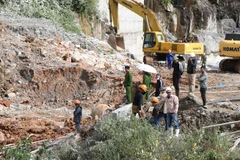Dr Nguyen Van Nga of the Department of Natural Resources andEnvironment said the groundwater was also close to exhaustion.
"My studies show that it began to dwindle in 1996, falling by 2m to 3mevery year in several areas," Assoc Prof Dr Le Van Trung, Director ofthe National University in HCM City 's Geology-InformationTechnology Centre, said.
Nga told Sai Gon Tiep Thi(Sai Gon Marketing) newspaper that in many places the water wascontaminated by nitrate and iron though he did not specify their source.
In some places, the water has four times the permissible NO3 content and 100 times the iron content.
Trung said the exploitation of groundwater has increased by severaltimes, causing its level to recede from level 2 to level 3 or even 4,resulting in salinisation in many places.
Water hasturned brackish in many places in districts 8, 5, and Binh Thanh andparts of districts 2 and Binh Chanh, while in the southeastern districtsof Nha Be and Can Gio, it is become much saltier.
Though the volume of water exploited in a day is controlled, theexploitation is concentrated in a few places where it is now virtuallyexhausted.
Nga blamed the situation on poor water management and the lack of a clear plan for exploitation.
The City People's Committee previously had earlier banned the drawingof groundwater in 30 wards in 13 districts, but, with water supplyfailing to keep pace with the urbanisation and industrial growth, theban was rarely observed.
"Urgent solutions are necessary to deal with the situation," Nga said.
"The water supply should be stepped up to meet the needs of city residents so that exploitation of groundwater stops."
From 2020 onwards, groundwater should only be drawn in suburbandistricts like 9, 12, Thu Duc, Hoc Mon, and Cu Chi, he added. /.
























